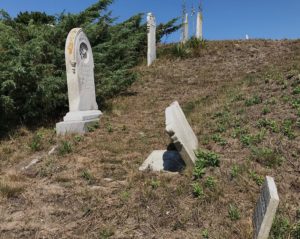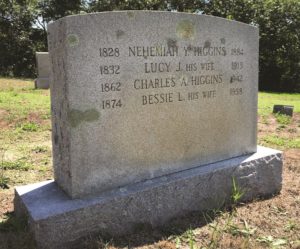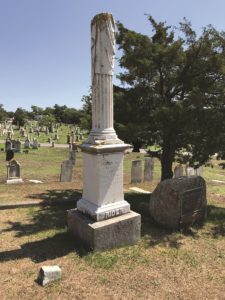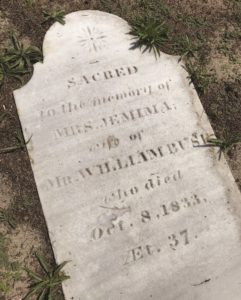In November 1857, word reached Provincetown that the schooner E. Nickerson was missing and presumed lost with all on board.
Built at Essex in 1850 and previously enrolled at Barnstable, by late 1851 the E. Nickerson was permanently registered at Provincetown from where it engaged in Atlantic whaling. In June 1857, Boston-born Capt. John Pettingill took command of the vessel, sailing in August with his family — his wife, Belinda, a member of the dynastic Cook family, and their two young sons, Thomas and Marshall. The crew included Nova Scotia-born Robert Richardson of Provincetown, married and the father of three young children.

As news of the E. Nickerson tragedy rippled through town, the loss of Capt. Pettingill resurrected memories of a drama from six years earlier that had, as the newspapers noted, set tongues wagging and gossip swirling.
In December 1850, the 80-foot schooner Harriet Neal had embarked on a whaling voyage under the command of 31-year-old Capt. James Cook Bush, who had recently returned from an April-to-October voyage. The crew for the December voyage included First Mate John Pettingill; Second Mate Nehemiah Higgins, a Provincetown native; and boatsteerer (or harpooner) James Ryan, a native of Ireland.
Returning on Nov. 1, 1851 from the Western Islands laden with 75 barrels of sperm oil — each barrel holding approximately 35 gallons — the Harriet Neal rounded Long Point and sailed into Provincetown Harbor with her flag at half-mast. A boat sent to meet the schooner at her anchorage learned the sad news: Capt. J.C. Bush, last seen on deck on Oct. 19, was said to have taken his life by jumping overboard. Command of the Harriet Neal had been assumed by First Mate Pettingill.

No sooner had this news spread in town when accusations began to fly. Many townspeople, including the late captain’s father, William Bush, and Provincetown mariners who had interacted with the Harriet Neal over the course of her voyage, did not believe that James was a suicide, instead suspecting that he had been murdered and thrown overboard by Pettingill, Higgins, and Ryan.
The three were detained on a complaint by William Bush and brought before Justice of the Peace Godfrey Rider, who determined that no such act had been committed and dismissed the complaint.
The case was subsequently before United States Commissioner Benjamin F. Hallett, where the three were charged with obtaining possession of the Harriet Neal by force, fraud, or intimidation. That complaint, too, was dismissed on the grounds that there was “not a particle of evidence to substantiate the charge.”

The sad affair that consumed the close-knit town might have concluded after the dismissal of these complaints but for letters that had been written by Godfrey Rider Jr. and published in the Barnstable Patriot newspaper days after the Harriet Neal returned to Provincetown. Rider did not directly accuse Pettingill, Higgins, and Ryan of killing Capt. Bush. He even referenced the investigation by his father, who had concluded that there wasn’t evidence to bind the parties over. But the younger Rider did write that it was “generally believed” that the crew members had killed Bush and thrown him overboard. He noted that “it is the general opinion that he came to his death by the hands of John Pettingill, first mate, Nehemiah Higgins, second mate, and James Ryan, boatsteerer.”

Rider followed up his first letter with a second that attempted to clarify his statements, noting that “I did not wish or intend for it to be understood that they took hold of him and threw him overboard, or murdered him with their own hands, but that they were the cause of his absence, and undoubtedly his death, by ill treatment, although there are some who really think that they really did kill him with their own hands; yet it is not generally believed.” Rider suggested that the three had benefited from the sympathy of “their own citizens” and had they “been strangers to our town, I think they would have had very little sympathy.”
Pettingill and Higgins sued Godfrey Rider Jr. for libel and slander, stating that “the defendant caused to be published a false and malicious libel concerning the plaintiff.” In May 1853, a jury found for the plaintiffs and assessed damages in the amount of $250 for each man against Rider. (James Ryan appears not to have been a party to the libel case.)
In the end, the circumstances surrounding the death of Capt. Bush were no clearer than they had been on the day the Harriet Neal returned to Provincetown. His family, including his wife of three years, Hannah Cowing Bush, who later married blacksmith Amasa Taylor, were left with unanswered questions and no explanation of the captain’s disappearance. They were forced to live with the suspicion that the crew members, who were their Provincetown neighbors, knew something but remained steadfastly silent.

Had the crew mutinied, as the newspapers salaciously suggested? Had Capt. Bush been prone to “melancholy fits,” as was testified to, his despair exacerbated by his having failed to procure enough whale oil to make the voyage a success? Had he been the victim of relentless ill treatment and disrespect by his crew, enough to cause him to “make way with himself”?
One Provincetown captain who had crossed paths with the Harriet Neal on several occasions during the voyage and to whom Capt. Bush had confided his torment testified, “I have no doubt if he had been treated as a living man ought to be treated by Mr. _____ and Mr. _____ , he would be a living man this day.”

Mercifully, the mother of Capt. Bush, Jemima Perry Bush, did not live to see the sad affair play out and the accused exonerated, though his father did. William’s estate was probated shortly after his death in October 1856. A year later, the E. Nickerson, with Capt. John Pettingill at the helm and his entire family aboard, was lost at sea.
Postscript: Though the Bush family was not large by Provincetown standards, it counts several notable members, including the Universalist minister Richard Perry Bush (who married Emma Linwood Paine, the daughter of Provincetown native Capt. Lysander Paine) and his children, Tufts University Dean and Professor Edith Linwood Bush and her brother, engineer, inventor, and World War II science adviser Vannevar Bush.



